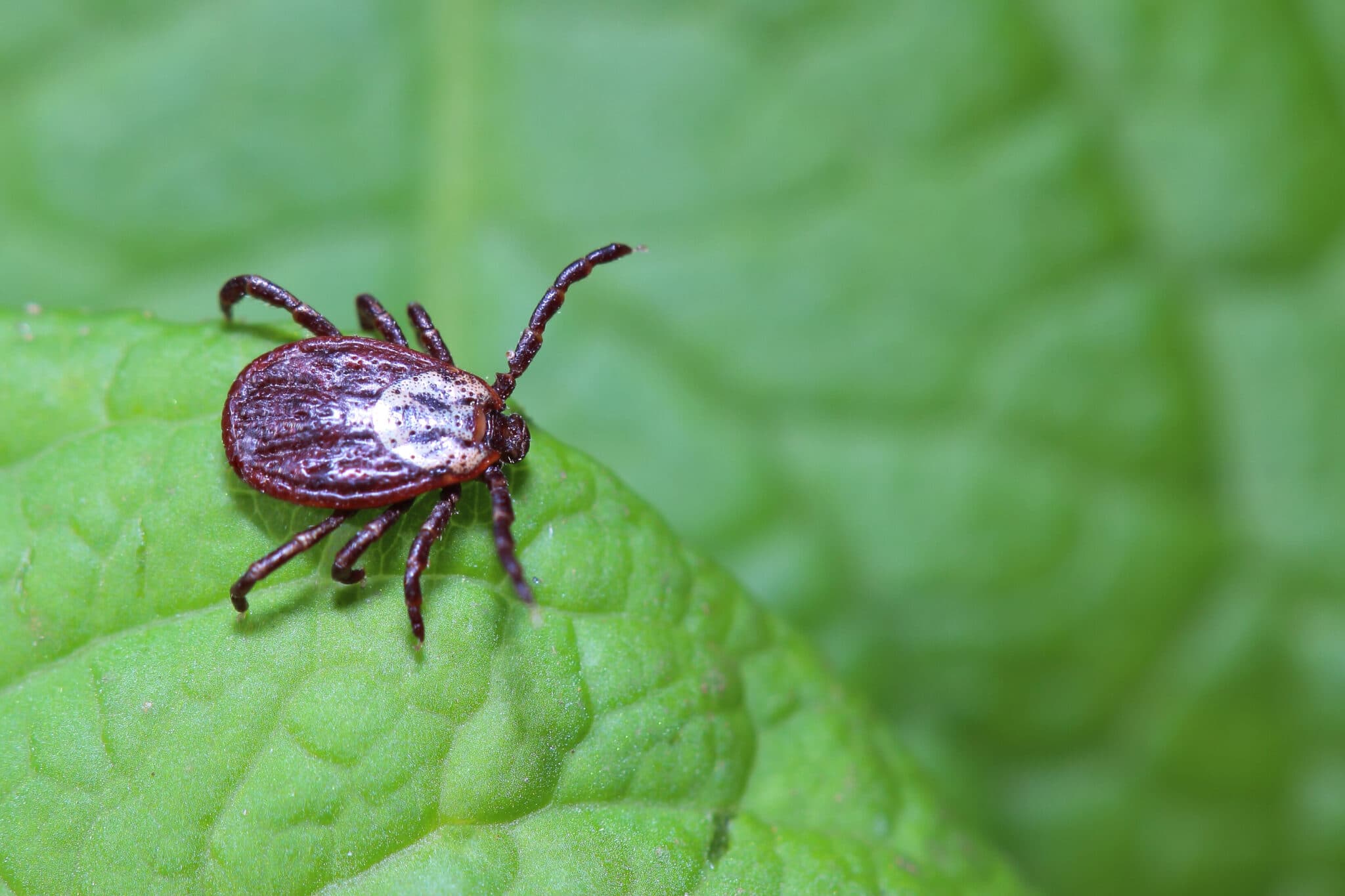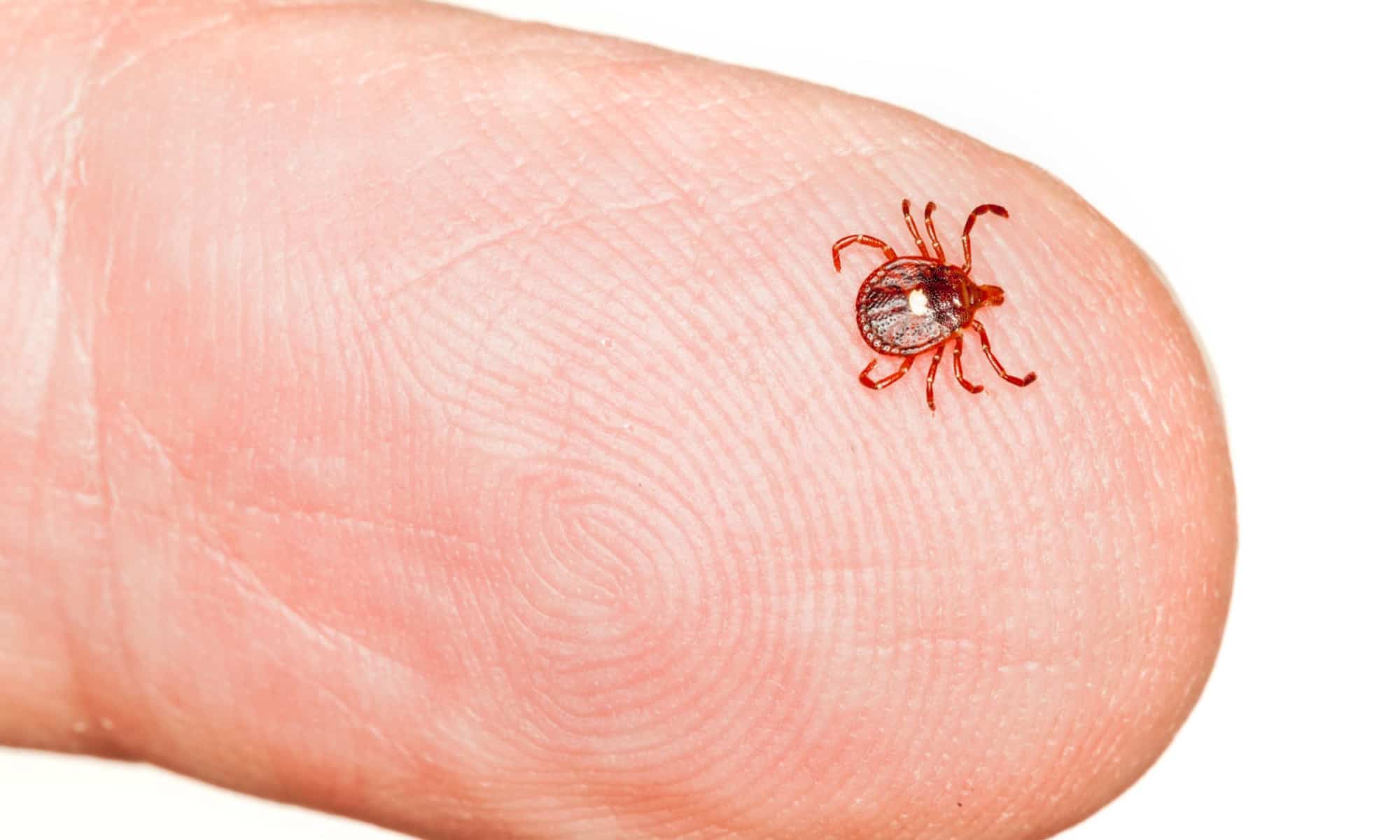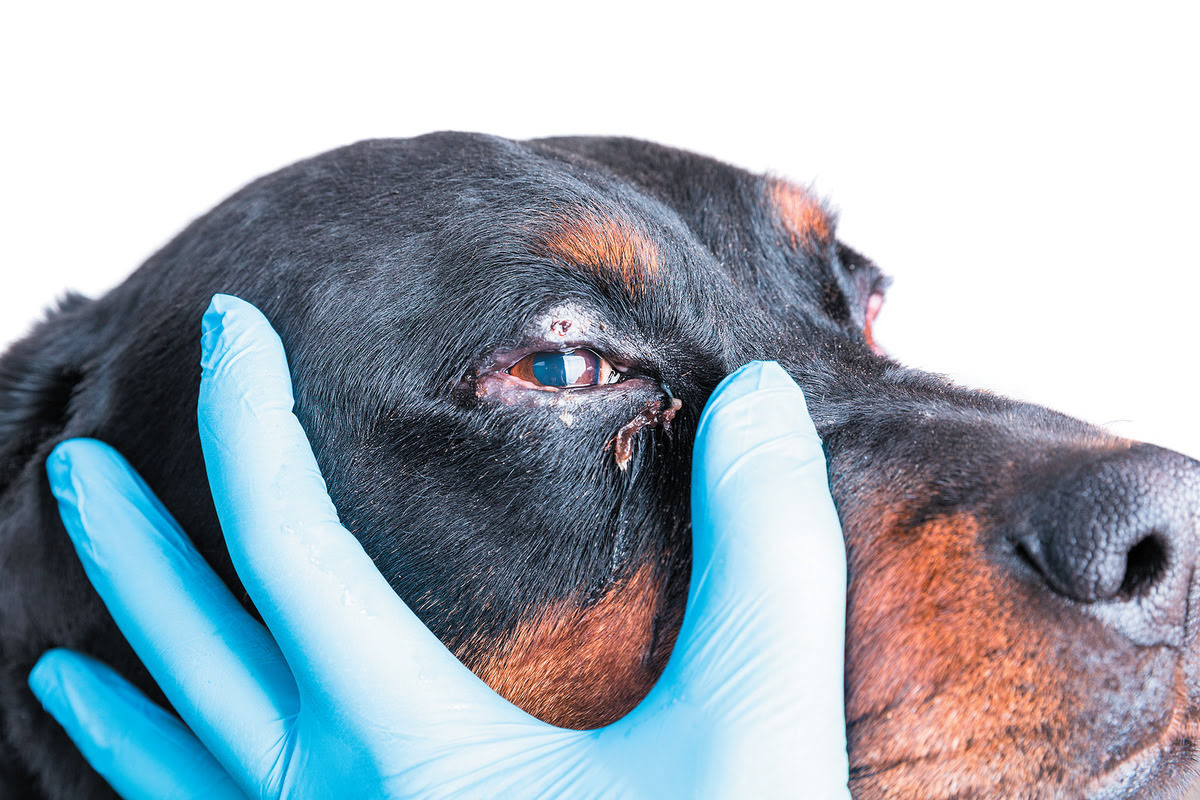Home>Health & Wellness>Common Health Issues>How To Get Rid Of Ticks On Dogs And In The Yard


Common Health Issues
How To Get Rid Of Ticks On Dogs And In The Yard
Modified: February 21, 2024
Learn effective ways to eliminate ticks on dogs and in the yard to prevent common health issues. Get expert tips and advice for tick control.
(Many of the links in this article redirect to a specific reviewed product. Your purchase of these products through affiliate links helps to generate commission for Pawsomeoldies.com, at no extra cost. Learn more)
Table of Contents
Introduction
Ticks are tiny, blood-sucking parasites that can pose a significant threat to the health and well-being of our furry friends. These pesky creatures are not only a nuisance but also carriers of various diseases, making it crucial for pet owners to be vigilant in protecting their dogs from tick infestations. Understanding how to identify, remove, and prevent ticks is essential for ensuring the safety and comfort of our canine companions.
In this comprehensive guide, we will delve into the world of ticks, exploring the dangers they pose and the steps pet owners can take to safeguard their dogs and homes. From learning how to check your dog for ticks to implementing effective tick control measures in your yard, this article aims to equip you with the knowledge and tools necessary to combat these persistent pests.
As we embark on this journey, it's important to recognize that ticks are not just a seasonal concern. While they are most active during the warmer months, they can thrive in various environments and remain a threat throughout the year. By familiarizing ourselves with the behavior and habitats of ticks, we can proactively address potential infestations and minimize the risks they present to our beloved canine companions.
Join us as we uncover the best practices for identifying, removing, and preventing ticks, both on our dogs and in our living spaces. By arming ourselves with this valuable information, we can take proactive steps to create a safe and tick-free environment for our furry friends to thrive in.
Understanding Ticks and the Dangers They Pose
Ticks are small arachnids that belong to the family Ixodidae. These parasitic creatures are commonly found in grassy, wooded, and humid areas, where they latch onto hosts to feed on blood. While they may seem inconspicuous due to their size, ticks can pose significant dangers to both humans and animals, including our beloved canine companions.
One of the most concerning aspects of ticks is their ability to transmit diseases. When a tick attaches itself to a host, it can transmit pathogens through its saliva, potentially leading to the development of various illnesses. In the case of dogs, tick-borne diseases such as Lyme disease, ehrlichiosis, anaplasmosis, and Rocky Mountain spotted fever can have severe consequences if left untreated. These conditions can cause symptoms ranging from fever and lethargy to joint pain and neurological issues, posing a serious threat to the health and well-being of our furry friends.
Furthermore, ticks are adept at concealing themselves on a dog's body, making it challenging to detect their presence. They often attach themselves in hard-to-spot areas such as the ears, between the toes, and under the tail, making thorough inspections crucial for early identification and removal.
In addition to the direct health risks they pose, ticks can also instill fear and discomfort in both dogs and their owners. The mere presence of these parasites can lead to anxiety and distress, impacting the overall quality of life for our canine companions.
Understanding the dangers associated with ticks underscores the importance of proactive prevention and regular inspections. By familiarizing ourselves with the behavior and potential consequences of tick infestations, we can take informed steps to protect our dogs from these persistent pests. In the following sections, we will explore how to check for ticks on your dog, safely remove any parasites, and implement effective tick control measures in your yard, ultimately creating a safer and more secure environment for your furry friend.
Checking Your Dog for Ticks
Regularly checking your dog for ticks is a crucial aspect of responsible pet ownership, especially if your furry friend spends time outdoors in areas where ticks are prevalent. By incorporating thorough tick checks into your routine, you can promptly identify and remove any unwanted hitchhikers before they have the chance to pose a threat to your dog's health.
To begin the tick-checking process, find a quiet and comfortable space to examine your dog. It's essential to conduct these inspections in a calm and gentle manner to avoid causing any distress to your canine companion. Using your hands, carefully run them over your dog's entire body, paying close attention to areas where ticks are commonly found. These include the ears, around the eyes, under the collar, between the toes, and in the groin and armpit areas.
As you perform the inspection, be on the lookout for small, dark, or reddish-brown bumps on your dog's skin. Ticks can vary in size, ranging from as small as a pinhead to as large as a pea when engorged with blood. Therefore, a meticulous approach is necessary to ensure that no ticks go unnoticed. Additionally, parting your dog's fur and inspecting the skin underneath can help reveal any hidden ticks that may be lurking out of sight.
If you spot a tick during the inspection, it's important to remain calm and proceed with caution. Use a pair of fine-tipped tweezers to grasp the tick as close to the skin's surface as possible. With a steady hand, gently pull the tick straight out, ensuring that you do not twist or crush its body. Once removed, place the tick in a container with rubbing alcohol to effectively dispose of it.
After completing the inspection, it's beneficial to reward your dog with praise and a treat, reinforcing positive associations with the tick-checking process. By incorporating this routine into your regular grooming sessions, you can create a comfortable and familiar experience for your dog, making future inspections more manageable.
By diligently checking your dog for ticks and promptly removing any parasites, you can significantly reduce the risk of tick-borne illnesses and ensure the well-being of your furry companion. This proactive approach to tick prevention empowers pet owners to take an active role in safeguarding their dogs from the potential dangers posed by these persistent pests.
Removing Ticks from Your Dog
When it comes to removing ticks from your dog, a cautious and methodical approach is essential to ensure the safety and well-being of your furry companion. Prompt and proper tick removal not only minimizes the risk of disease transmission but also prevents potential discomfort and irritation for your dog.
If you discover a tick on your dog during a routine inspection, it's crucial to remain calm and approach the removal process with care. To begin, gather a pair of fine-tipped tweezers and put on a pair of gloves to protect yourself from potential exposure to tick-borne pathogens. It's important to note that using tweezers specifically designed for tick removal can facilitate a more effective and controlled extraction.
With the tweezers in hand, carefully grasp the tick as close to the skin's surface as possible. Applying gentle and steady pressure, steadily pull the tick straight out, ensuring that you do not twist or crush its body. It's vital to maintain a firm grip to prevent the tick from breaking apart, as this can lead to potential infection or irritation at the bite site.
As you remove the tick, be mindful to avoid squeezing its body, as this can cause the tick to regurgitate its stomach contents into the wound, increasing the risk of disease transmission. Once the tick is successfully removed, place it in a container with rubbing alcohol to effectively dispose of it. Avoid crushing the tick with your fingers, as this can release pathogens and increase the risk of exposure.
After removing the tick, thoroughly clean the bite area on your dog's skin with antiseptic solution to minimize the risk of infection. Additionally, monitor the site for any signs of inflammation or unusual behavior in your dog, as these could indicate a potential reaction to the tick bite.
It's important to note that various tick removal devices, such as tick hooks and tick twisters, are available on the market and can offer an alternative method for safely extracting ticks from your dog's skin. These specialized tools are designed to facilitate the safe and efficient removal of ticks, providing pet owners with additional options for addressing tick infestations.
By mastering the art of tick removal and incorporating it into your regular grooming and inspection routine, you can effectively safeguard your dog from the potential dangers posed by these persistent parasites. This proactive approach empowers pet owners to take an active role in protecting their canine companions and promoting a safe and healthy environment for their beloved pets.
Preventing Ticks in Your Yard
Creating a tick-free environment in your yard is essential for minimizing the risk of tick infestations and ensuring the safety of your pets and family members. By implementing proactive measures to deter ticks from inhabiting your outdoor space, you can significantly reduce the likelihood of exposure to these persistent parasites. Here are some effective strategies for preventing ticks in your yard:
-
Maintain a Tidy Landscape: Keeping your yard well-maintained is a fundamental step in tick prevention. Regularly mowing the lawn, trimming shrubs, and clearing away leaf litter and brush can help eliminate tick habitats and reduce the likelihood of encountering these pests in your outdoor space.
-
Create Tick-Safe Zones: Designating certain areas of your yard as tick-safe zones can provide a secure space for your pets to enjoy outdoor activities. Consider creating gravel or mulch paths and play areas, as ticks are less likely to thrive in these environments compared to dense vegetation.
-
Utilize Natural Tick Repellents: Incorporating natural tick repellents into your yard can serve as a deterrent for these pests. Planting tick-repelling vegetation such as lavender, lemongrass, and marigolds can help discourage ticks from taking up residence in your yard. Additionally, cedar mulch and cedar oil have been shown to repel ticks, offering a natural and aromatic solution to tick prevention.
-
Implement Tick Control Products: Utilizing tick control products specifically designed for outdoor use can provide an additional layer of defense against ticks in your yard. These products may include tick-repelling sprays, granules, and barriers that create a protective perimeter around your outdoor space, minimizing the presence of ticks and reducing the risk of infestations.
-
Consider Professional Yard Treatments: In cases where tick infestations pose a significant concern, seeking professional yard treatments from pest control experts can offer a comprehensive and targeted approach to tick prevention. Professional treatments may involve the application of environmentally friendly tick control products that effectively target ticks while ensuring the safety of your pets and the surrounding ecosystem.
By implementing these proactive measures, pet owners can create a safer and more secure outdoor environment for their furry companions. Taking a comprehensive approach to tick prevention in your yard not only safeguards the well-being of your pets but also promotes a harmonious and tick-free outdoor space for your entire family to enjoy.
Read more: How To Get Rid Of Fleas And Ticks On My Dog
Natural and Chemical Tick Control Methods
When it comes to combating tick infestations, pet owners have a range of natural and chemical control methods at their disposal. These approaches are designed to effectively deter ticks from inhabiting living spaces and provide pet owners with versatile options for tick prevention. By incorporating a combination of natural and chemical control methods, individuals can create a comprehensive defense against ticks, ultimately promoting a safer and more secure environment for their beloved pets.
Natural Tick Control Methods
-
Essential Oils: Certain essential oils, such as cedarwood, eucalyptus, and peppermint, are known for their natural tick-repelling properties. By diluting these oils and applying them to a dog's collar or bedding, pet owners can create a fragrant and effective barrier against ticks. Additionally, incorporating these oils into homemade tick-repellent sprays offers a natural and aromatic solution to tick prevention.
-
Diatomaceous Earth: This natural, sedimentary rock powder is composed of fossilized remains of diatoms, which are microscopic algae. When sprinkled in outdoor areas frequented by pets, diatomaceous earth acts as a desiccant, effectively dehydrating and eliminating ticks upon contact. Its non-toxic nature makes it a safe and environmentally friendly option for tick control.
-
Tick-Repelling Plants: Planting tick-repelling vegetation, such as lavender, lemongrass, and marigolds, in outdoor spaces can serve as a natural deterrent for ticks. These plants emit fragrances that repel ticks, creating a protective barrier around the yard and reducing the likelihood of tick infestations.
Chemical Tick Control Methods
-
Topical Treatments: Veterinary-recommended topical treatments, such as spot-on solutions and medicated shampoos, offer effective chemical control against ticks. These products contain active ingredients that target ticks and disrupt their life cycle, ultimately reducing the risk of infestations on pets and in living spaces.
-
Oral Medications: Oral tick control medications provide a systemic approach to tick prevention, as they are ingested by pets and circulate in the bloodstream, effectively targeting ticks upon attachment. These medications offer long-lasting protection and are often prescribed by veterinarians for comprehensive tick control.
-
Yard Sprays and Foggers: Chemical tick control products designed for outdoor use, such as yard sprays and foggers, create a protective barrier against ticks in outdoor spaces. These products contain tick-repelling chemicals that effectively minimize tick populations, reducing the risk of exposure to pets and family members.
By integrating natural and chemical tick control methods, pet owners can tailor their approach to tick prevention based on their specific needs and preferences. Whether opting for natural solutions, chemical treatments, or a combination of both, the goal remains the same: to create a tick-free environment that prioritizes the health and well-being of pets and fosters a harmonious living space for the entire family.
Conclusion
In conclusion, safeguarding our canine companions from the perils of tick infestations is a responsibility that pet owners must prioritize. Ticks, with their potential to transmit diseases and cause discomfort, pose a significant threat to the well-being of our beloved pets. By understanding the dangers associated with ticks and implementing proactive measures, we can create a safer and more secure environment for our furry friends to thrive in.
Regularly checking our dogs for ticks and promptly removing any parasites is a fundamental aspect of responsible pet ownership. Thorough inspections, coupled with gentle and methodical tick removal techniques, empower pet owners to minimize the risk of tick-borne illnesses and ensure the comfort of their canine companions. By incorporating these practices into our routine, we can proactively address potential infestations and mitigate the dangers posed by these persistent pests.
Furthermore, creating a tick-free yard environment is essential for reducing the likelihood of tick encounters and promoting a safe outdoor space for our pets and family members. From maintaining a tidy landscape to utilizing natural and chemical tick control methods, pet owners can take a comprehensive approach to tick prevention, ultimately fostering a harmonious and tick-free living space for their beloved pets to enjoy.
By integrating natural tick repellents, such as essential oils and tick-repelling plants, with veterinary-recommended topical treatments and yard sprays, pet owners can tailor their approach to tick control based on their specific needs and preferences. This versatile combination of natural and chemical methods empowers individuals to create a comprehensive defense against ticks, ultimately prioritizing the health and well-being of their pets.
In essence, the journey to combatting tick infestations is one that requires vigilance, knowledge, and a proactive mindset. By familiarizing ourselves with the behavior of ticks, mastering the art of tick removal, and implementing effective tick control measures, we can create a safer and more secure environment for our furry companions. Through these efforts, we not only protect our pets from the dangers of tick-borne illnesses but also cultivate a nurturing and tick-free space where they can thrive and flourish.














